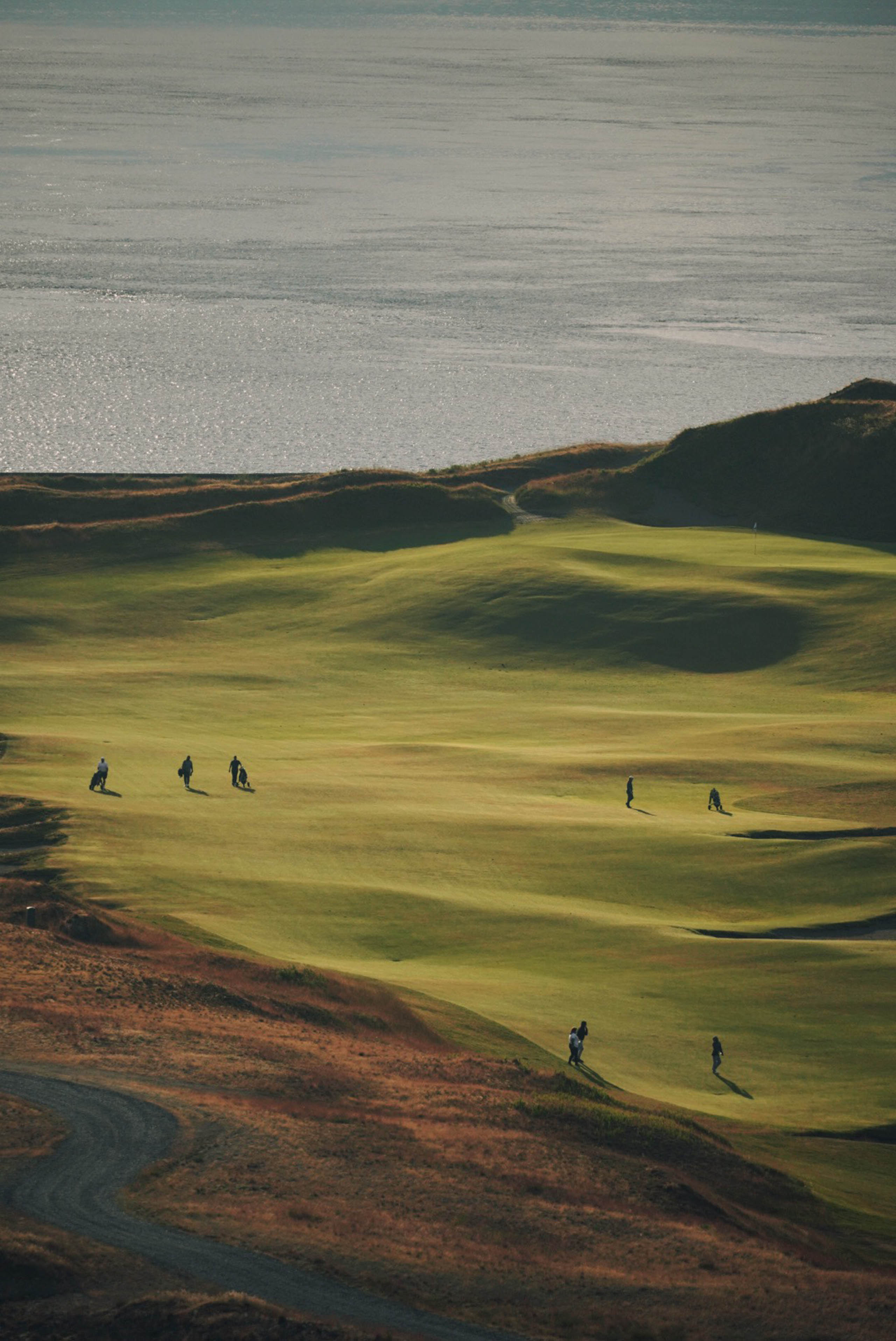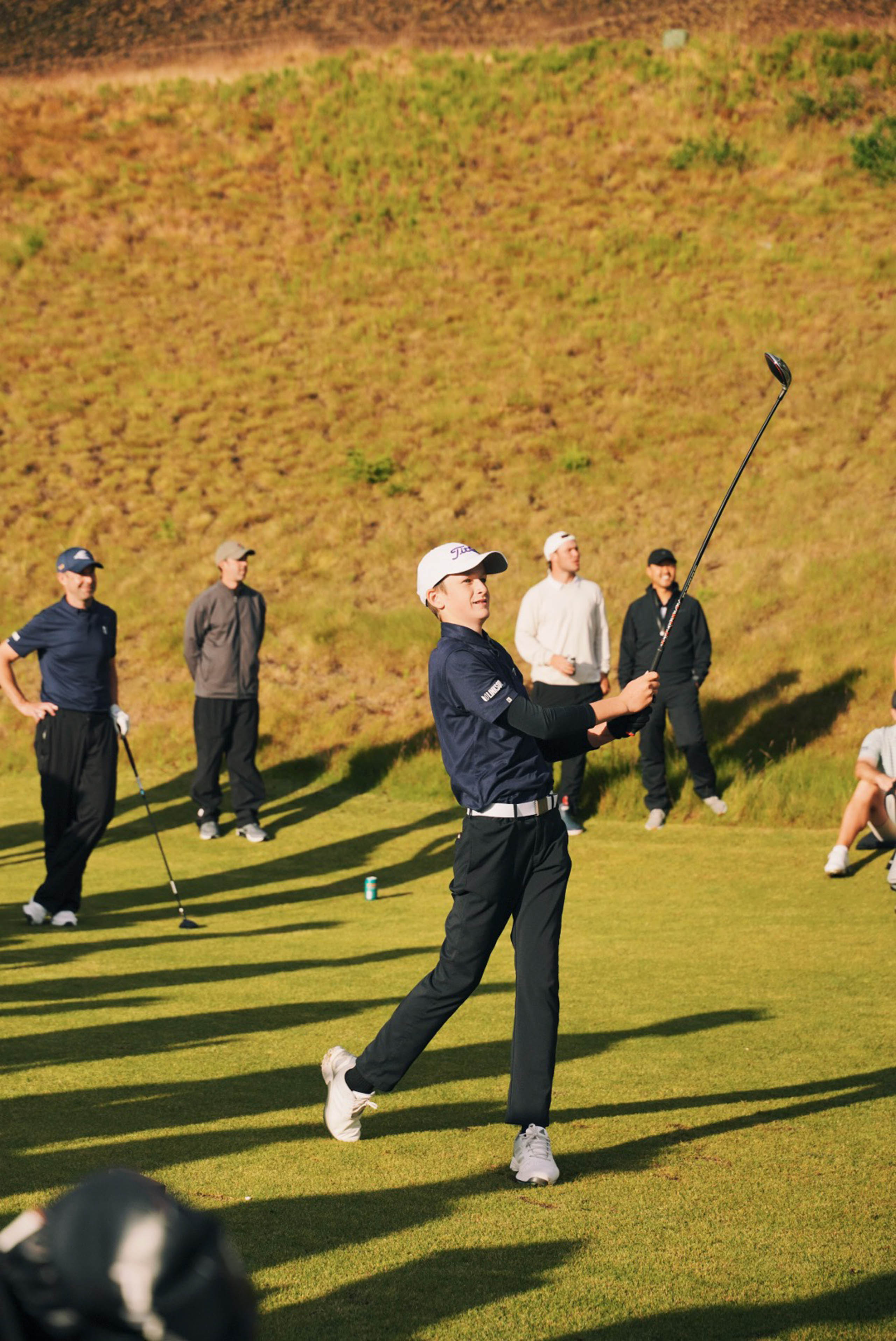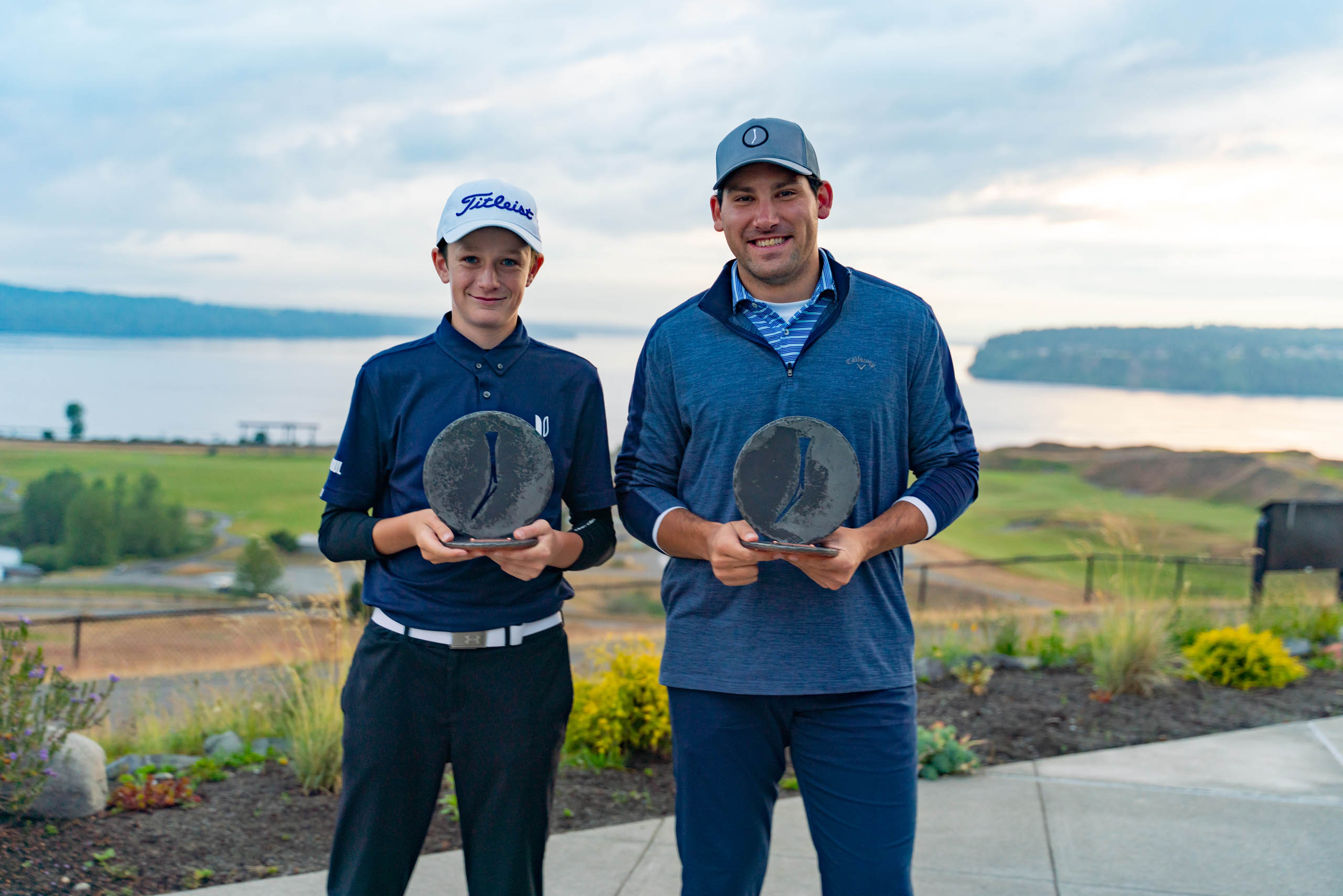I know, I know. What more can be said about Chambers Bay that hasn’t already?
Full transparency, I asked myself the same question while driving up the California coast for our first-ever stroke play event.
After reading TGJ No. 16 and vividly recalling that U.S. Open from 2015, I knew of Chamber’s Bay’s origins—how it rose from an old gravel mine, leaving only a train track and scattered cement structures as a reminder of its rocky past.
I also knew it was a tough walk—7,400-ish yards from the back and most of that up some serious slope. And how there was one tree on the entire course, and, after some Google Earth recon, how that wasn’t even technically true. I knew of its public status and how tee times were tough to come by long before a pandemic left the country with a serious golf bug.
Finally, I knew its current greens were far from the splotchy surfaces that damn near sent Billy Horschel to therapy following the U.S. Open’s first visit to the Pacific Northwest.
I knew all of this. 15-year-old Walker Lamb did not. He was 9 when Dustin Johnson three-putted 18. When he graduates high school in 2024, it’ll have been nearly a decade since Jordan Spieth stole one with a birdie-double bogey-birdie finish that would make Christopher Nolan blush. Hell, I’d be shocked if he knew how to spell poa annua, let alone identify it.
All Walker Lamb knew was that he was playing in a Golfer’s Journal event on Friday at Chambers Bay with his Dad; that there would be 94 other players competing for one net and one gross trophy; that there was rain in the forecast; that the course was open to TGJ members all day; and that he should stick around to compete in the knockout game on the par-3 9th hole at day’s end.
Some 12 hours later, as he posed for a picture with the low net trophy in one hand, a certificate for a custom Scotty Cameron in another, and the sun setting over Puget Sound behind him, Walker Lamb knew a lot more. About this place, and himself.
“He’s won a couple of big junior tournaments already,” Mark Lamb whispered while looking on with pride. “But this is the most important day of his golfing life.”



*
Jeff Marsh has spent more time at Chambers Bay than anybody not employed by the city of University Place, Washington. The golf photography junkie lives just down the street and has filled more memory cards with photos here than his internal hard drive could ever hold. So when Craig Esposito posted a round of 70 (-2) in side-winding rain and USGA-approved pins, I wanted his take.
“One of the best I’ve ever seen here,” said Marsh. “You’re not supposed to do that in these conditions.”
But damned if Esposito didn’t birdie three of his last four to do it anyway. The 70 would stand as the lone under-par round of the day, sneaking past a pair of 74s to earn Esposito his first TGJ title.
And then there was Lamb. With an impressive round of 80 in the morning and low net honors secured (73), he decided to test his luck in the afternoon’s Lone Fir Standing competition. The rules were simple:
- Hit No. 9 green from 155 to advance.
- Hit it from 225 yards to advance.
When the gauntlet was complete, only 13 of the 75 participants remained. With daylight fading, those knocked out sampled local whiskeys and watched as a closest to the pin among the 13 would decide who went home with a Scotty Cameron. Without hesitation, Lamb strutted to the tee with 3-wood in hand, looking to place a marker for the field to chase. His ball took off just left of the pin, snuck over the front bunker, ran to the back edge, paused for a moment, then slowly trickled back down the slope towards the hole.
Over the hooting and hollering of the crowd, a muffled voice broke through on a nearby walkie-talkie: “Four feet! Beat that!”
Nobody did.


*
People who are lucky enough to play Chambers Bay fall into one of two categories: those who swear by it, and those who didn’t play well.
Chambers is a polarizing golf course, and I now understand why. It requires a shuttle from the pro shop down to the first tee. The greens repel poor shots with an animosity that makes it difficult not to take personally. Its bunkering can only be described as small moon craters, and you’ve got a better chance of pole-vaulting over those massive fescue dunes than an errant tee shot popping out of them.
But a different look puts you in that first category.
The shuttle opens up to a heart-stopping view of a major championship course that in another time would have surely been kept private. The contours around the greens offer far more solutions than problems. Stare at these bunkers long enough and you’ll enter a near psychedelic state with little to no risk of side effects. And those gnarly dunes are meant to steer your eyes, not your golf ball. Aim farther left.
When played as intended, Chambers Bay is an otherworldly golf experience. It’s a test of creativity, geometry, depth-perception, decision making and discipline. With no carts available, it will question your golf stamina, and when the foggy rain rolls in—and it inevitably will—your entire Chambers Bay experience will boil down to one essential question: How much do you really love golf?
After finally visiting the course beside the Sound, I’m certain I know. It’s enough to make rain feel like sunshine.






























